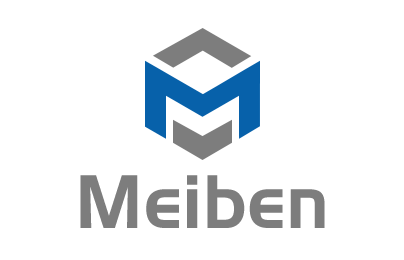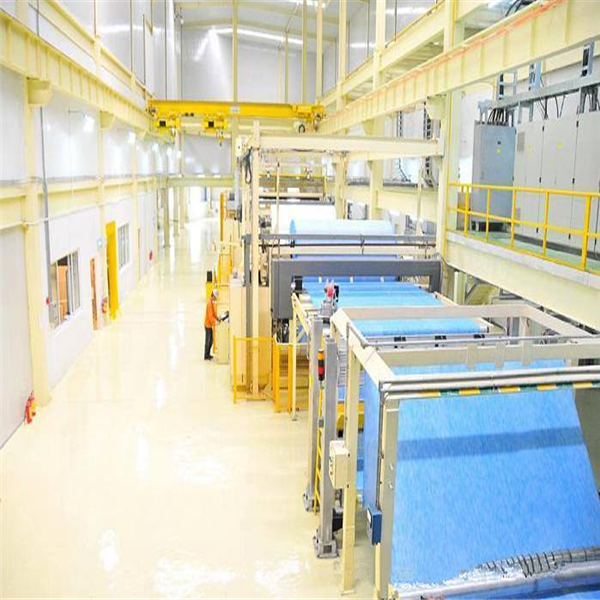SMS (Spunbond/Meltblown/Spunbond) is a non-woven fabric developed by an American company in the early 1990s. It is a combination of spunbond and meltblown processes. It is a two-layer spunbond (Spunbond) fabric and one layer. Meltblown cloth composite. The biggest feature of spunbonded nonwovens is that the fibers in the web are continuous filaments. Compared with other nonwovens of the same weight, it has high strength and close vertical and horizontal performance, but its web uniformity and surface coverage Poor. Melt-blown non-woven fabric is a superfine fiber structure, the fiber diameter is small, the surface area of the fabric is large, the porosity is small, the filtration resistance is small, the filtration efficiency is high, the surface coverage and shielding performance are very good; and its disadvantage is low strength , Poor wear resistance. Combining the two, the composite formed just compensates for each other’s weaknesses, has the characteristics of high strength, good wear resistance, and excellent shielding performance. Although SMS has a short history, the current SMS with polypropylene (PP) as the main raw material has been well applied due to its excellent performance, low price, and mature production technology, and its market is gradually expanding. Therefore, the discussion on its process and application is very meaningful.
1 SMS production process
The production process of SMS is mainly divided into three types: online compounding, offline compounding, and the recent one-step and half-method compounding. The following three kinds of crafts are discussed separately.
1.1 Online compounding process
On-line compounding process means that SMS compounding can be realized by spunbonding and meltblown equipment on the same production line, the so-called one-step SMS. In the same production line, there are two spunbond spinnerets and a meltblown die. The filaments are sprayed from the first spunbond spinneret to form the first layer of web, and then the meltblown die The second layer of web is formed on it, and then the third layer of web is formed through the second spunbond spinneret. The three-layer web is bonded by a hot rolling machine, and finally cut and wound by a winder to form an SMS non-woven fabric.
The online composite SMS production line combines two different web forming technologies, and the production process has many advantages and flexibility. For example, the ratio of spunbond layer and meltblown layer can be adjusted at will according to the performance requirements of the product; the product has good air permeability; it can produce low-weight products; the product has better filtration performance and hydrostatic pressure resistance. However, the online composite production line has disadvantages such as high investment cost, long construction period, difficult production technology, and large start-up loss, so it is not suitable for small order production. In terms of production efficiency, because the meltblown production speed is low, the spunbond line speed must be sacrificed to ensure the quality and performance of SMS products. In order to solve this problem, multiple melt blown die production lines such as SMMS/SMMMS have been developed to increase productivity by increasing the number of melt blown die heads.
1.2 Offline compounding process
The off-line compounding process means that spunbond and meltblown fabrics are prepared by spunbonded and meltblown processes respectively, and then the two nonwovens are combined through a compounding device to form an SMS composite nonwoven, the so-called two Footwork SMS. Offline composite SMS has to go through three processes. First, spunbond fabric is produced by spunbond production line, meltblown fabric is produced by meltblown production line, and then a layer of meltblown fabric is sandwiched between two layers of spunbonded fabric. The laminating machine is hot-rolled or ultrasonically bonded into SMS composite non-woven fabric.
The advantages of off-line composite production of SMS products are small investment, quick results, and high flexibility. They are suitable for small-order production. The composite meltblown non-woven fabric content can be used to improve the water pressure resistance of composite materials. The disadvantage of off-line composite production of SMS products is that the product performance is not ideal. For example, the meltblown fabric produced separately does not have the supporting effect of the spunbond fabric. The meltblown process is difficult to flexibly adjust, and it is difficult to improve the product’s air permeability and resistance to hydrostatic pressure. At the same time, due to the low strength of the melt blown cloth, the 3D structure of the melt blown is easy to be destroyed after being stretched under force. Therefore, it is difficult to reduce the weight of the melt blown cloth in the offline composite SMS product, and the barrier property and static resistance of the product The water pressure capacity is also slightly lost due to the stretching of the melt blown cloth. The uniformity of such a composite SMS product is difficult to control. In addition, after 3 times of bonding of SMS products produced by offline composite production, the air permeability of the products is greatly reduced.
1.3 Introduction to the new process-one step and a half method
In view of the shortcomings of large investment in one-step SMS equipment and high weight of two-step SMS products, some domestic companies have developed one-step and half-method SMS, that is, a layer of spunbond fabric is unrolled and sent to the meltblown zone with the mesh curtain. After being combined with the meltblown cloth, a layer of spunbond cloth is superimposed, and finally through the hot roll compounding process. This equipment investment is smaller than the one-step SMS, and the process is more flexible than the one-step SMS. Moreover, because the meltblown cloth is produced online, it does not need to go through the winding and unwinding processes, even the structure of the low-weight meltblown cloth will not This effectively solves the shortcomings of the high weight of the two-step SMS product.
The one-step and half-method compounding is innovative, and it solves the barrier that offline compounding cannot produce low-weight products. If you use low-weight small nip spunbond fabric for online compounding, the appearance of the product is quite similar to the on-line compound product. This method is flexible in process adjustment, and the product variety can be flexibly changed by changing spunbond fabrics of different colors and weights. However, because the spunbond fabric used for composite is hot rolled, it has a certain impact on the air permeability of the product; at the same time, the spunbond fabric is used as the bottom layer, and the fiber density is greater than that of the spunbond fiber web that has not been hot rolled, which increases the melt blown area. The burden of the vacuum suction system. The production speed of this process still depends on the production speed of the meltblown line, which can only be improved by increasing the meltblown die.
2 Features of SMS products
SMS composite technology makes full use of the technical advantages of spunbond products and meltblown products, and greatly expands the application fields of nonwovens. SMS products not only have the inherent high wear resistance of the spunbond layer, but also have the higher filtration efficiency, barrier performance, particle penetration resistance, hydrostatic pressure resistance, shielding performance and appearance uniformity of the intermediate meltblown layer, so as to achieve It has good filterability, liquid resistance and opacity.
The SMS composite nonwoven fabric with PP as the main raw material has the following excellent characteristics:
(1) Uniform and beautiful appearance;
(2) High resistance to hydrostatic pressure;
(3) Soft feel;
(4) Good air permeability;
(5) Good filtering effect;
(6) Strong acid and alkali resistance.
In addition, SMS nonwovens can be treated with three antibodies (anti-alcohol, anti-blood, and anti-oil), anti-static, anti-bacterial, and anti-aging to meet the needs of different uses.
It is precisely because of the excellent characteristics of SMS products that determine its wide range of uses.
3 Application of SMS products
3.1 Thin SMS products
Because of its outstanding waterproof and breathability, it is especially suitable for the sanitary market, such as anti-leakage and backing of sanitary napkins, sanitary pads, baby diapers, adult incontinence diapers, etc.
3.2 Medium-thickness SMS products
Suitable for use in medical treatment, making surgical gowns, surgical wraps, surgical drapes, bactericidal bandages, wound stickers, plasters, etc.; also suitable for industrial fields, for making work clothes, protective clothing, etc. In this application field, the spunlace cloth has always been the world in the past. Because of its good softness, water absorption, appearance and performance, it is closest to traditional textiles. The water pressure capacity is poor, and the barrier capacity is not ideal. Currently in the medical market, these two products are basically evenly divided. Nowadays, SMS products are more suitable as high-quality medical protective materials due to their good isolation performance, especially those SMS products that have undergone three anti-static and antistatic treatments, and have been widely used worldwide.
3.3 Thick SMS products
It is widely used as a high-efficiency filter material for various gases and liquids. At the same time, it is also an excellent high-efficiency oil-absorbing material. It is used in industrial waste water degreasing, marine oil cleaning and industrial wipes.
4 Prospects for the SMS composite nonwovens market in China
Hygiene products are the largest market for SMS composite nonwovens. The most important factor for the rapid development of SMS materials worldwide is to cater to the rapid growth and urgent needs of disposable sanitary products. Such products include women’s sanitary napkins, sanitary pads, baby diapers, adult incontinence products and patient care pads, among which baby diapers are the most in demand for SMS. In developed countries such as Europe and the United States, the penetration rate of disposable sanitary products has reached 80% to 90%, and spunbond fabrics and SMS are widely used. In my country, according to the statistics of the Household Paper Professional Committee of the China Paper Association, the market penetration rate of sanitary napkins in mainland China in 2005 was 61.4%, the market penetration rate of sanitary pads was 6.17%, and the total market penetration of baby diapers and diapers The rate was 9.43%. Therefore, the current penetration rate of disposable sanitary products in my country still has a big gap with developed countries. However, with the advancement of technology and economy and the continuous improvement of people’s health safety and health awareness, SMS will continue to expand its share in the Chinese sanitary products market. .
In the field of medical and health care, in some large and medium-sized hospitals in large and medium-sized cities in my country in recent years, SMS surgical gowns, masks, surgical drapes, protective clothing, ambulance suits, medical equipment covers, etc. have been used. However, the current domestic consumption level is relatively low, the knowledge of SMS non-woven products is not enough, and the application is far from popular enough. With the continuous development of my country’s economy and the continuous improvement of national health regulations, in the next 3 to 5 years, the application of SMS nonwovens in the medical and health field will have a rapid growth [8].
With the development of society and the improvement of domestic people’s living standards, SMS composite nonwoven products will be further promoted and applied in various aspects such as hygiene, medical treatment, industry, agriculture, home decoration, and social life.
Post time: Dec-18-2021

